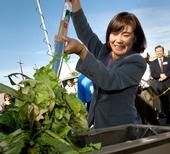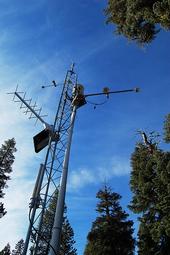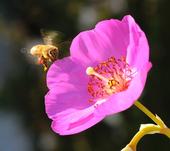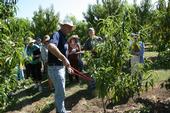- Author: Sylvia Wright

Ten years ago, a California family's food-processing business was booming -- so much so that it was in danger of drowning in its own success. A new idea out of UC Davis helped them stay on top.
In 1983, Gills Onions had been asked by La Victoria Salsa to provide large quantities of high-quality, fresh-cut onions when no automated equipment and processes existed. With typical farmers’ "can do" attitude, brothers Steve and David Gill and their 16 employees developed a system to peel, slice, dice and deliver the first fresh-cut onions in the food processing industry.
By 2000, the Gills and their 400 employees were processing millions of pounds of sliced and diced...
- Author: Pamela Kan-Rice

When the great outdoors is your research laboratory, gathering data can be a challenge. To get a broader perspective on the extent of damage caused by sudden oak death, a UC Berkeley Cooperative Extension geographer is using crowd sourcing to enhance her research on the disease that has killed over a million of California’s iconic oak trees since 1995.
Maggi Kelly, UC Berkeley Cooperative Extension specialist, started collecting data from community members through her OakMapper website in 2001. Now she has a mobile application for smartphones.
While out in a park or forest, iPhone users can use the new OakMapper mobile app to report...
- Author: Kim Ingram

A new wireless data collection system deployed at Duncan Peak, located near the town of Foresthill on the Middle Fork of the American River basin, is part of a new water information system for California. This extensively distributed sensor network will allow for better characterization on the amount of water stored in the snow and the soil throughout the watershed.
This wireless system is part of the research being conducted by University of California researchers as part of the Sierra Nevada Adaptive Management Project (SNAMP) to investigate the impacts of fuels treatment projects on water quality and quantity and how water is routed through catchments. Information collected from...
- Author: Kathy Keatley Garvey

Going green in your backyard doesn’t mean just planting a bee-friendly garden and providing water for the bees.
Have you ever thought about becoming a backyard beekeeper? You can help boost the declining bee population while engaging in a fascinating and rewarding hobby. Your flowers, fruits and vegetables will benefit (as will your neighbors' gardens). Another reward that’s sweet: honey.
There’s another benefit, too. If you’re into photography, especially macro photography, this is a perfect opportunity to “bee” there.
The number of backyard beekeepers in the United States has increased by about 15 percent over the last three years, according to Kim Flottum (top), editor of Bee Culture magazine and...
- Author: John Stumbos

A greener vision of the home landscape is taking shape throughout California with the help of volunteer master gardeners and the California Center for Urban Horticulture (CCUH).
The center, a statewide program begun at UC Davis in 2007, is holding educational workshops in various locations that will help master gardeners and other gardening enthusiasts learn more earth-friendly gardening techniques.
The first five “Your Sustainable Backyard” workshops were held in 2009 and 2010 and focused on roses, fruit trees, and edible landscaping. More than 800 people attended those events.
Five more workshops are in development for 2011. Two have been confirmed:
- “Your Sustainable Backyard: ...



